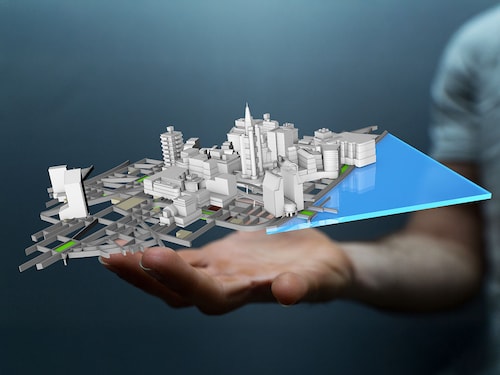A Tale of Twin Cities: How digital models can pre-empt the collapse of civic inf
Survey of India is working with Genesys International to create 3D models of cities to test their resilience to simulated urban challenges


A storm unleashes its terror over Kochi. Water slithers through the dark alleyways, buses hastily grind to a halt, rescue boats scatter across swollen streets. Panic swells, but only in this version of the city.
In the version we live in, the sky remains dry, buses move, and the streets are empty. The chaos is unfolding in its twin, an exact replica built in the cloud, where disasters strike first, so the real city can be spared.
For decades, Indian cities have lived in a cycle of reaction. Floods are mapped after they ruin homes. Flyovers are built after jams choke entire neighbourhoods. Potholes are patched after accidents have claimed lives. Trial-and-error has been the foundation of our urban expansion, but the cost of those errors has become unbearable.
With 600 million people set to live in Indian cities by the middle of this century, anticipation is no longer optional; it is the only way to keep our country from slowly suffocating itself. That is the promise of digital twin cities.
They begin as three-dimensional models, stitched together from satellite imagery, LiDAR scans, drone footage, and street-level surveys. But they are not frozen entities. When wired into a city’s sensors and networks (traffic cameras, weather stations, IoT devices), they come to life.
A street can be flooded with simulated rainfall to see where the water would flow. A new flyover can be constructed into the grid to test how traffic patterns bend or break. An ambulance’s path can be rehearsed against the possibility of road closures. The city sets a rehearsal stage for crises and solutions. India is emerging as one of the most ambitious subjects for this experiment.
The Survey of India (SOI), working with Genesys International, is creating digital twins for Kochi, Kanpur, Ayodhya, and even the dense, chaotic labyrinth of Dharavi. MapmyIndia has begun laying twin-ready infrastructure in Amaravati, with the aim of extending it to 100 cities. If realised, it would be among the most extensive urban simulation frameworks in the world.
The applications reach far beyond roads and drains. Utilities can be monitored virtually, water pipelines checked for weak points, power grids modelled for failures before they occur. Environmental planners can visualise smog dispersal through a neighbourhood or track how river levels rise against embankments in heavy rain. Heritage sites such as Ayodhya can use their twin to simulate pilgrim flows before festivals bring in millions.
Pune offers the clearest preview of this future. Its twin, linked to a central command hub, integrates traffic, water supply, waste management, and citizen complaints. A pothole no longer depends on a resident’s phone call; it can be detected on the twin as the road surface deforms. A burst pipeline can be identified before dry taps alert households. When floods loom, rainfall and topographic data feed into the model so buses can be diverted and rescue teams mobilised before the city drowns.
Evidently, the implications are enormous. But this also raises sharp questions: Who owns the oceans of data these twins rely on? Who ensures they are secure from cyberattacks? And will smaller towns, not just major metros, have access to the same foresight?
In a country where urban life grows more precarious each year, the choice is between rehearsing the future in a virtual shadow or continuing to stumble through it unprepared. India’s digital twins may not eliminate chaos, but they offer something cities have rarely had: The chance to face tomorrow’s crises today.
Arav Kaul is a Grade XII student at the Dhirubhai Ambani International School in Mumbai
First Published: Oct 08, 2025, 12:04
Subscribe Now